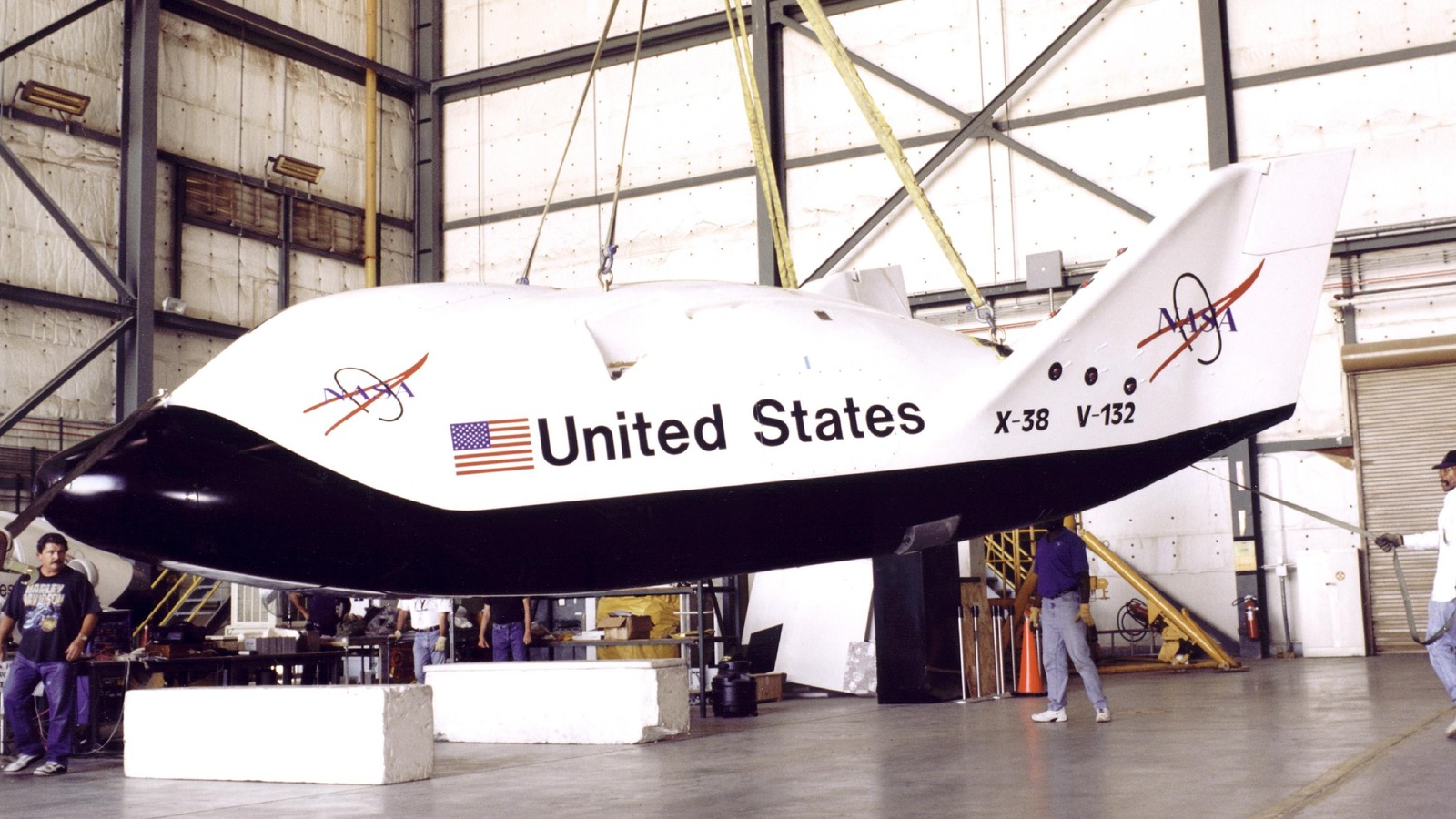
The X-38 was a collaborative effort. It involved the Johnson Space Center, Langley Research Center, Dryden Flight Research Center, and a contingent from the European Space Agency (ESA).
A team from the Netherlands built the rudders, while one from Spain fashioned the landing skids. The Germans came up with a composite material for the thermal protection system on the nose, France provided aerodynamics and thermodynamics work on the overall vehicle shape, while Belgium built structural parts for the aft of the vehicle.
The team had to overcome two enormous challenges. First, it had to build a custom human space rescue vehicle, which had never been done before. Second, it had to be done at a reduced cost. A whole fleet had to cost less than half of one entire Space Shuttle. And, despite an initial estimate of over $2 billion, the X-38 came in significantly under budget — about one-quarter of that original estimate.
What the team built was, in effect, three crafts in one. The “spacecraft” portion of the X-38 had a deorbit propulsion module to escape the station, then maneuver through space and re-enter Earth’s atmosphere. The “lifting body” of the vehicle had to automatically lock in and fly towards a landing site as it dropped to Earth in case its human payload was incapacitated or incapable of flying.
Stay connected with us on social media platform for instant update click here to join our Twitter, & Facebook
We are now on Telegram. Click here to join our channel (@TechiUpdate) and stay updated with the latest Technology headlines.
For all the latest Gaming News Click Here
